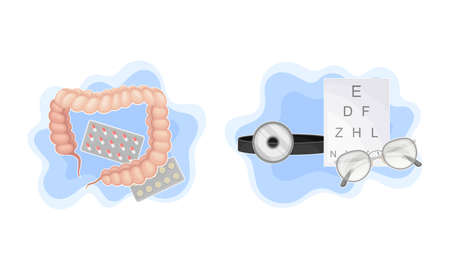1. Introduction to Pursed-Lip Breathing
Pursed-lip breathing (PLB) is a simple, yet highly effective breathing technique that helps patients manage shortness of breath and improve their overall breathing pattern. This technique is especially important for people who are going through cardiac and pulmonary rehabilitation in the United States, including those with conditions like chronic obstructive pulmonary disease (COPD), heart failure, or asthma.
What Is Pursed-Lip Breathing?
Pursed-lip breathing involves inhaling slowly through the nose and exhaling gently through tightly pressed (pursed) lips. The main idea is to slow down your breathing rate and keep airways open longer during exhalation, making it easier to move air in and out of the lungs.
Physiological Benefits of Pursed-Lip Breathing
| Benefit | Description |
|---|---|
| Reduces shortness of breath | Helps ease the feeling of not getting enough air, especially during activities |
| Improves oxygen exchange | Keeps airways open longer, allowing more stale air to leave the lungs and fresh oxygen to come in |
| Lowers anxiety | Promotes relaxation by focusing on controlled, steady breaths |
| Strengthens breathing muscles | Encourages better use of the diaphragm and chest muscles |
Why Pursed-Lip Breathing Matters in Cardiac and Pulmonary Rehab
In American rehab settings, PLB is a key part of patient education because it empowers individuals to better control their breathing during daily tasks or exercise. For many people dealing with heart or lung problems, activities like climbing stairs or walking can quickly lead to breathlessness. Learning PLB gives them a tool they can use anytime they feel out of breath, helping them stay active and independent.
Common Situations Where PLB Is Helpful:
- Walking up hills or stairs
- Lifting groceries or laundry
- Bending over to tie shoes
- Getting dressed or showering
- Coping with sudden feelings of breathlessness or anxiety
Teaching pursed-lip breathing is a foundational step in helping cardiac and pulmonary rehab patients regain confidence and comfort in their everyday lives across the United States.
2. Patient Assessment and Education
Strategies for Assessing Patient Understanding and Readiness
Before teaching pursed-lip breathing, its important to evaluate each patients baseline knowledge and readiness to learn. This helps tailor the approach and ensures better outcomes. Here are some practical strategies:
- Ask Open-Ended Questions: Start with questions like, “Can you tell me what you know about breathing exercises?” or “Have you tried any breathing techniques before?” This gives insight into their current understanding.
- Use the Teach-Back Method: After explaining, ask the patient to show or explain the technique back to you. For example, “Can you show me how you would do pursed-lip breathing?”
- Observe Non-Verbal Cues: Watch for confusion, frustration, or signs of discomfort. Adjust your explanation if needed.
- Assess Motivation: Ask questions such as, “What would make learning this technique easier for you?” or “How do you feel about using this exercise at home?”
Checklist: Assessing Readiness and Understanding
| Assessment Area | Questions/Actions | What to Look For |
|---|---|---|
| Knowledge | “Can you describe why breathing techniques might help you?” | Correct concepts or misconceptions |
| Skill Demonstration | “Show me how you would practice pursed-lip breathing.” | Proper technique, confidence level |
| Cultural Preferences | “Are there ways I can explain this that would be more comfortable for you?” | Cultural beliefs, language needs, preferences for visuals vs. spoken instructions |
| Motivation & Barriers | “What could make it easier or harder for you to practice this at home?” | Potential obstacles (e.g., family support, time constraints) |
Tips for Explaining Pursed-Lip Breathing to a Culturally Diverse American Population
The United States is home to people from many backgrounds. When teaching pursed-lip breathing, its essential to use inclusive language and respect cultural differences. Here are some tips:
- Simplify Language: Use everyday words instead of medical jargon. Instead of saying “exhale,” try “breathe out gently.”
- Use Visuals: Demonstrate the technique yourself or use simple diagrams. Some patients may prefer watching a video or looking at pictures.
- Acknowledge Cultural Practices: Ask if the patient has experience with other breathing techniques (like yoga or meditation). Connect pursed-lip breathing to these familiar practices when possible.
- Offer Materials in Multiple Languages: If English is not the patients first language, provide handouts or videos in their preferred language when available.
- Create a Comfortable Environment: Encourage questions and let patients know its okay to ask for clarification.
- Relate Technique to Daily Life: Explain how pursed-lip breathing can help during daily activities like walking up stairs or feeling short of breath.
Phrasing Examples: Explaining Pursed-Lip Breathing Simply
| If You Want To Say… | You Can Try Saying… |
|---|---|
| Breathe in through your nose, then exhale slowly through pursed lips. | Breathe in gently through your nose like smelling flowers. Then breathe out slowly through your mouth like blowing out a candle. |
| This technique helps improve oxygen exchange and reduce shortness of breath. | This way of breathing can help you feel less out of breath and make it easier to do things like walk or talk. |
Cultural Sensitivity Tips for Educators
- Avoid assumptions about what patients already know—ask first.
- If using metaphors or examples, choose ones relevant to American culture (e.g., “like blowing out birthday candles”).
- If working with groups, allow time for sharing personal experiences with breathing exercises.
The key is ongoing communication—regularly check in with your patients and adapt your teaching style based on their feedback and preferences.

3. Step-by-Step Instructional Techniques
Understanding Your Audience: Adapting to Learning Styles
People in the United States often have diverse learning preferences, so it’s important to adapt your teaching approach. Some learn best by hearing instructions (auditory learners), some by seeing demonstrations or visuals (visual learners), and others by physically trying out the technique themselves (kinesthetic learners).
Clear Verbal Cues for Pursed-Lip Breathing
Use simple and familiar language when giving instructions. For example:
- Breathe in slowly through your nose, like you’re smelling flowers.
- Purse your lips as if you’re going to whistle or gently blow out a candle.
- Exhale slowly and gently through pursed lips. Take twice as long to breathe out as you did to breathe in.
Sample Verbal Cue Table
| Step | Verbal Cue Example |
|---|---|
| Inhale | “Take a slow breath in through your nose, like youre smelling fresh cookies.” |
| Purse Lips | “Pucker your lips, as if you’re about to blow on hot soup.” |
| Exhale | “Breathe out gently and slowly through your lips, like blowing bubbles.” |
Using Visual Aids for Better Understanding
Visual aids can make instructions clearer. Here are some ideas tailored for American rehabilitation settings:
- Demonstration Videos: Short clips showing real people performing pursed-lip breathing step-by-step.
- Printed Diagrams: Handouts with images or cartoons illustrating mouth and lip shapes.
- Whiteboard Drawings: Quick sketches during group classes help reinforce each step visually.
Example of Visual Aid Application Table
| Learning Style | Suggested Visual Aid | Description/Usage |
|---|---|---|
| Visual Learner | Pictured Handout | Step-by-step images showing the mouth position and breathing flow. |
| Auditory Learner | Instructional Audio Clip | A recording guiding the patient through each breath cycle. |
| Kinesthetic Learner | Hands-on Practice with Feedback | Therapist demonstrates, then guides patient through practice, correcting technique as needed. |
Hands-On Demonstration: Learning by Doing
The most effective way to teach pursed-lip breathing is often a live demonstration followed by supervised practice. Here’s how you can structure it:
- You demonstrate first: Show the patient how to do it while speaking aloud each step.
- The patient practices: Let them try while you provide encouragement and gentle corrections.
- Use feedback tools: Small mirrors can help patients see their lip shape; counting out loud helps pace their breathing.
- Praise progress: Celebrate small improvements to build confidence and motivation.
Cultural Tips for Engagement in U.S. Settings:
- Avoid medical jargon; use everyday examples (like “blowing bubbles” or “smelling cookies”).
- Create a relaxed environment where patients feel comfortable asking questions.
- If working with groups, encourage peer support and sharing of experiences.
This approach ensures that patients of different backgrounds and learning styles in cardiac and pulmonary rehab programs receive clear, practical instruction that empowers them to use pursed-lip breathing confidently at home or in daily life.
4. Incorporating Pursed-Lip Breathing into Daily Life
Why Daily Practice Matters
Pursed-lip breathing is a simple yet powerful tool for people in cardiac and pulmonary rehab. Using it in real-life situations can make daily activities feel easier and help control shortness of breath. It’s important to help patients develop habits so this technique becomes second nature, especially during common tasks that may trigger symptoms.
Practical Tips for Everyday Use
Walking
Encourage patients to practice pursed-lip breathing while walking. Remind them to inhale through the nose for two counts and exhale slowly through pursed lips for four counts. This helps regulate breathing and reduces fatigue.
Climbing Stairs
Stairs can be challenging for those with heart or lung issues. Suggest that patients pause at the bottom, take a deep breath in, then climb one or two steps as they breathe out slowly through pursed lips. Repeat this pattern for each set of steps.
Managing Shortness of Breath
If patients feel winded or anxious, remind them to stop and use pursed-lip breathing until their breath steadies. Practicing this during moments of discomfort helps build confidence in managing symptoms.
Pursed-Lip Breathing in Common Activities
| Activity | How to Use Pursed-Lip Breathing |
|---|---|
| Walking | Breathe in through your nose as you take 2 steps, then breathe out through pursed lips over the next 4 steps. |
| Climbing Stairs | Inhale before starting, exhale through pursed lips as you go up each step; pause if needed. |
| Bending or Reaching | Breathe out through pursed lips when bending down or reaching overhead to avoid straining. |
| Lifting Groceries | Breathe in before lifting, exhale through pursed lips while lifting to maintain control. |
| Feeling Anxious or Short of Breath | Sit down, relax shoulders, inhale through nose, exhale slowly through pursed lips until breathing eases. |
Making It a Habit
Suggest patients link pursed-lip breathing with specific triggers, like going up stairs or carrying bags. Encourage them to practice several times a day—even when feeling well—so it becomes automatic during more stressful moments. Positive reminders (like sticky notes on the fridge) can help reinforce these new habits.
5. Overcoming Barriers and Providing Support
Common Challenges Patients Face
When teaching pursed-lip breathing (PLB) in cardiac and pulmonary rehabilitation, many patients encounter similar hurdles. These challenges can make it difficult to learn or consistently use the technique. Here are some typical barriers:
| Barrier | Description | Example |
|---|---|---|
| Forgetfulness | Patients may forget to use PLB during daily activities or when symptoms arise. | Forgetting to use PLB while climbing stairs. |
| Lack of Motivation | Some may feel discouraged if they don’t see immediate results or find the process repetitive. | Losing interest after a week of practice with little perceived improvement. |
| Embarrassment | People might feel self-conscious practicing PLB in public places. | Avoiding PLB at work or social events. |
| Misinformation | Uncertainty about how to do the technique correctly can lead to poor outcomes. | Breathing too quickly or not forming lips properly. |
Actionable Encouragement Techniques
Helping patients overcome these barriers takes patience, creativity, and encouragement. Here are practical ways to support their journey:
- Use Reminders: Encourage setting phone alarms, sticky notes, or pairing PLB with daily routines like brushing teeth or watching TV.
- Track Progress: Suggest keeping a simple log of when they use PLB and how it makes them feel, reinforcing positive changes over time.
- Praise Small Wins: Celebrate even minor improvements. Acknowledge effort, not just outcomes, to keep motivation high.
- Create a Safe Practice Space: Reassure patients that practicing at home is okay before trying it in public. Normalize the technique as part of self-care.
- Simplify Instructions: Offer clear, step-by-step guidance and repeat demonstrations as needed until confidence grows.
Leveraging Community and Family Support in American Culture
The American cultural landscape offers several built-in support systems that can help patients stick with their PLB practice. Here’s how to make the most of them:
| Support System | How It Helps | Tips for Engagement |
|---|---|---|
| Family Members | Family can provide reminders, encouragement, and practice partners at home. | Teach family about PLB so they can spot-check technique and celebrate progress together. |
| Friends & Social Circles | Buddies can join in exercise routines or check in on progress through texts or calls. | Create a friendly “PLB challenge” for shared motivation or regular check-ins. |
| Support Groups & Rehab Classes | The group setting fosters accountability and learning from others’ experiences. | Encourage joining local rehab classes or online patient communities for extra support. |
| Healthcare Providers | Nurses, therapists, and doctors offer expert feedback and reassurance during follow-ups. | Schedule regular appointments to review technique and address concerns early on. |
Tapping into Local Resources
Many American communities have resources like senior centers, YMCA programs, church groups, or neighborhood wellness events. These venues often welcome health-related activities and can be ideal places for group education sessions or peer-led breathing practice circles. Encourage patients to explore what’s available locally and connect with others for ongoing encouragement.

